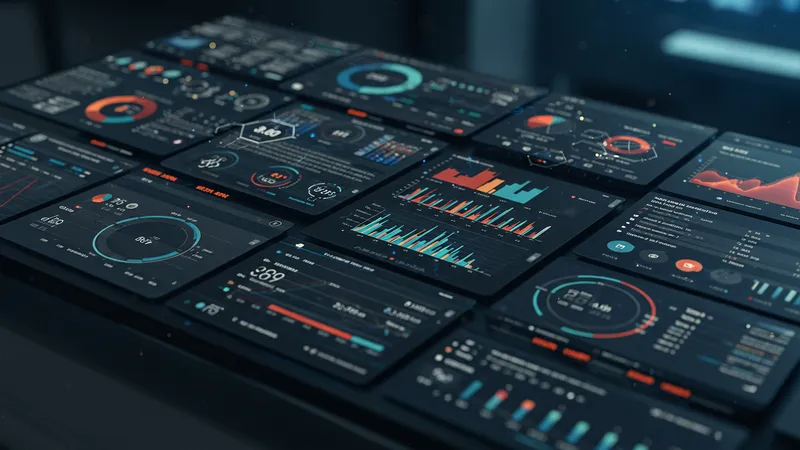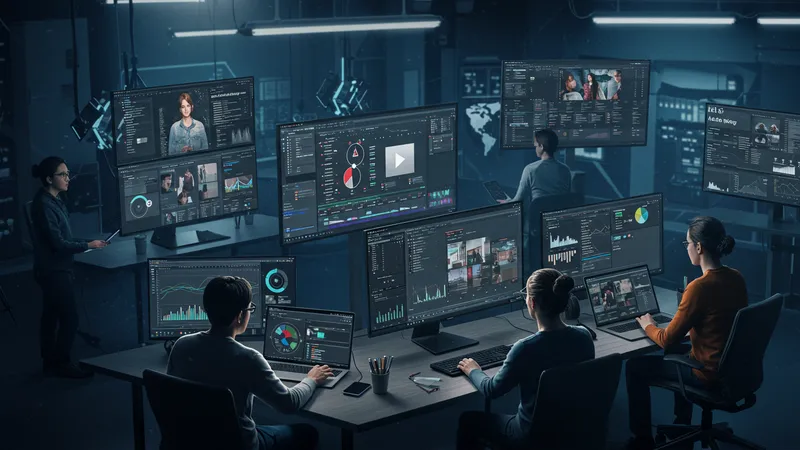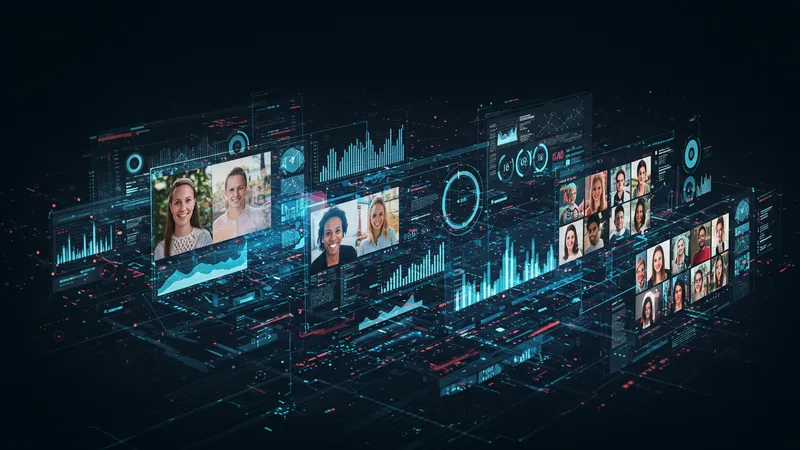

Artificial intelligence has quietly transformed digital advertising, pushing the boundaries of how brands connect with audiences through video. Rather than relying on broad demographics or subjective insights, AI-driven systems now analyze enormous streams of user data—watch habits, preferences, past engagement, and even subtle viewing patterns. The result? Targeted video campaigns that reach people with uncanny precision and deliver relevant content in the moments most likely to inspire action.
At the heart of these smarter strategies lies a complex ecosystem: machine learning algorithms sort audience signals, segment audiences in real-time, and predict which video messages will resonate best on each device or platform. This shift in strategy empowers marketers to optimize their ad budgets, decrease irrelevant impressions, and measure outcomes with a clarity not possible in previous eras. AI video targeting is quickly becoming essential for brands aiming to maximize the effectiveness of every campaign.

Smart AI video targeting tools surpass traditional gender-and-age filters by mining behavioral and contextual signals. A campaign on Google Ads, for example, can be fine-tuned to reach viewers who have recently searched for related products, watched competing brands’ ads, or even exhibited patterns of “readiness to purchase.” This level of personalization not only increases the odds of engagement but also minimizes wasted ad spend on viewers unlikely to convert.
Meta, formerly Facebook, takes hyper-targeting a step further with AI-powered “lookalike audiences.” By feeding the platform a core list of loyal customers, it can instantly scan user databases for new prospects who align across hundreds of digital touchpoints. Marketers can set their budget and risk tolerance, letting the algorithm continuously learn and optimize in real time—helping videos reach users genuinely interested in the brand’s narrative.
While platforms like TikTok For Business are newer entrants, they’ve made waves by blending AI-driven targeting with creative optimization. Their algorithm doesn’t just decide who sees a video; it also tests different video lengths, layouts, and calls to action depending on a user’s browsing behavior. This multi-layered use of AI creates an environment where both scale and nuance are possible, appealing to growth-driven brands worldwide.
Early studies suggest that AI-powered targeting can double video ad completion rates and deliver significant increases in post-view engagement. The platforms referenced above are setting the pace, each encouraging a move away from mass impressions and toward data-enriched storytelling. Yet, the full range of customization and optimization inside these systems remains surprisingly under-explored by many brands—and the deeper details reveal even more valuable insights ahead…
The backbone of next-generation video advertising lies in AI-powered audience segmentation, contextual analysis, and predictive optimization. Google Ads Video Campaigns allow marketers to utilize machine learning to understand user intent—combining search history, YouTube watch frequency, and geolocation data. With such broad data integration, it’s possible to unearth high-value microsegments within massive audiences, increasing efficiency at scale.

Meta’s video ad solutions lean heavily into dynamic audience construction. Their algorithms find connections among interests, behaviors, and device usage, creating a mosaic of potential customer groups with predictive performance scoring. The depth and flexibility of lookalike and custom audience options give marketers unprecedented agility to test creative hypotheses, refine messaging, and adapt to shifting online conversations—all automatically.
TikTok, on the other hand, brings its unique content recommendation engine to the advertising space. It observes how users engage with organic and sponsored videos, recognizing swipe speed, pause length, and even repeat views. These signals feed back into AI systems that match viewers to brands or trends they’re inclined to appreciate, allowing for a more authentic, emotionally resonant connection than blunt targeting by demographics alone.
This multi-pronged approach—combining big data, creative experimentation, and instant learning—means that video advertisers can focus less on manual audience curation and more on storytelling quality. The smart automation in these systems works behind the scenes, optimizing for performance while brands concentrate on crafting compelling narratives that match their audience’s evolving tastes.
Evaluating the success of AI-driven video targeting demands more than impression counts. Google Ads offers detailed dashboards tracking view-through rates, conversion rates, and average cost per view—all in real time. These granular performance metrics let marketers rapidly gauge which creative directions and targeting parameters drive meaningful outcomes, leading to quick iteration and smarter budget allocation.

Meta’s campaign reporting goes deep on engagement statistics, including the percentage of video watched, time spent on each frame, and subsequent actions such as page visits or shares. Their AI models continuously train on these insights, refining targeting accuracy and optimizing media placements for better ROI. Brands with clear goals—like lead generation or awareness—can electronically track their progress directly within the platform dashboard.
TikTok’s analytics suite balances intuitive design with raw power, consolidating key performance indicators from top-of-funnel (reach, unique views) to bottom-of-funnel (conversion and follow-through). The platform’s AI analyzes the full customer journey, identifying which creative edits or audience adjustments contribute most to campaign impact. This closed optimization loop gives marketers actionable data to fine-tune future launches and creative assets.
With all three platforms, the constant feedback between algorithm and marketer is reshaping advertising efficiency. These systems surface unexpected patterns—like new geographic “hotspots” or periods of heightened conversion—and even suggest automated adjustments, ensuring advertising dollars work harder over time.
AI’s impact on the creative process for video ads cannot be understated. Google Ads’ machine learning capabilities don’t just find the right viewers—they also run automated creative A/B splits, testing different intros, lengths, and calls to action. By analyzing viewer responses frame by frame, the platform can recommend creative edits that keep the audience engaged for longer, ultimately boosting completion and action rates.

Meta’s creative suite pairs targeting with automated dynamic content adjustment. The AI can re-edit videos to highlight specific product features for different audience clusters or shift the messaging emphasis to match emerging audience trends. Advertisers can upload multiple video assets, and the system autonomously serves the most effective combinations to each user segment, minimizing creative waste.
TikTok’s native tools allow brands to embrace a “test and learn” ethos at scale. Their system offers predictive editing—suggesting video durations, caption styles, and overlay placements based on trending engagement metrics. By rapidly iterating formats, brands can capitalize on viral moments and ensure their messages are always fresh and culture-relevant, maximizing their video ad investment.
The synergy between AI and creativity elevates not just campaign ROI but narrative authenticity. The platforms’ recommendations are rooted in actual user preferences, encouraging brands to focus on content quality while the algorithms handle the complex optimization tasks backstage.
The convergence of AI targeting and video advertising isn’t just a technological upgrade—it fundamentally changes the nature of digital marketing strategy. Marketers can tailor video messages at scale, ensuring each dollar is spent reaching viewers with genuine potential for engagement. Compared to traditional blanket campaigns, these AI-powered approaches typically yield higher retention, lower “skip” rates, and stronger conversion pipelines.

Brands can also react in near real time to shifting trends. When an unexpected surge in interest or engagement occurs, AI-powered platforms adjust on the fly, scaling budgets to capitalize on fleeting demand without manual oversight. This capability supports agile campaigns that move with the digital conversation, rather than trailing behind it.
Looking forward, we can expect AI video targeting to grow even more nuanced. Innovations in contextual sentiment analysis, cross-platform journey tracking, and privacy-compliant identifier systems promise to unlock deeper targeting while respecting user boundaries. Brands focusing on ethical, transparent data usage are likely to build the strongest customer trust as these technologies evolve.
In summary, the strategic advantage of AI in video ad targeting is now a cornerstone of digital advertising. Marketers who immerse themselves in the mechanics and creative possibilities of these systems—across platforms like Google Ads, Meta, and TikTok—position themselves to tell more compelling stories and drive measurable, lasting impact in a rapidly changing landscape.